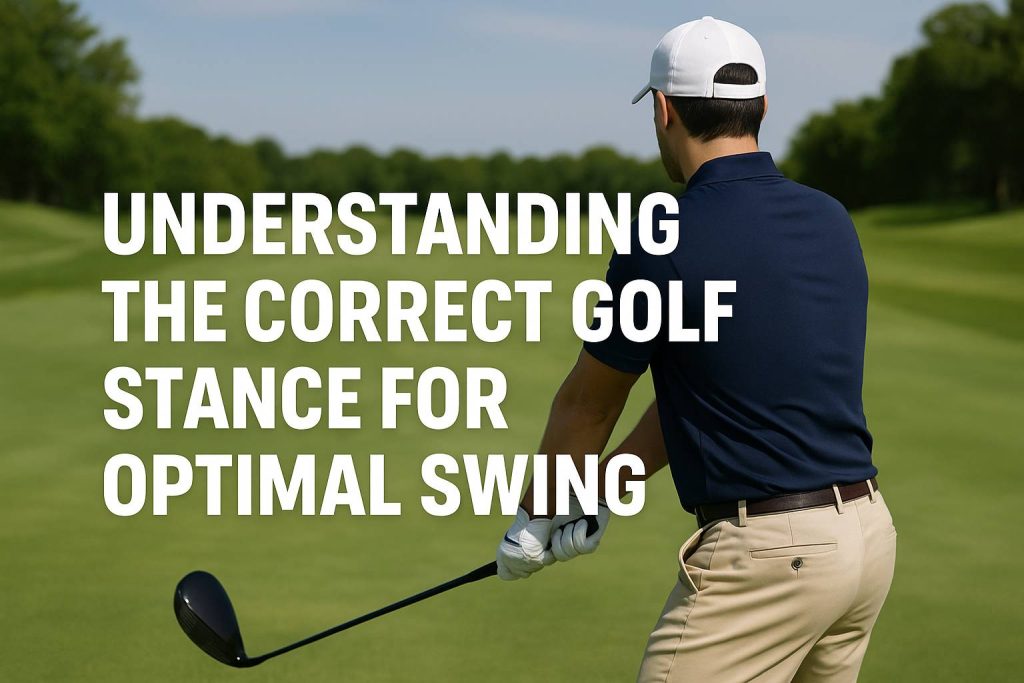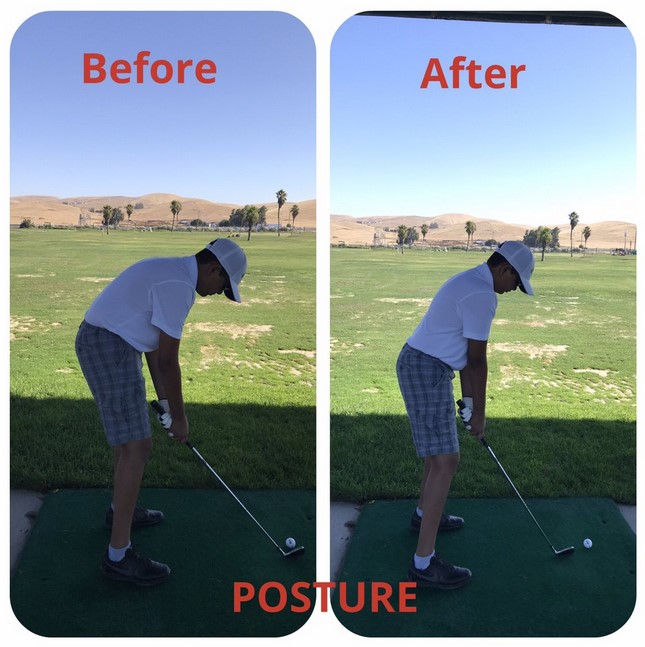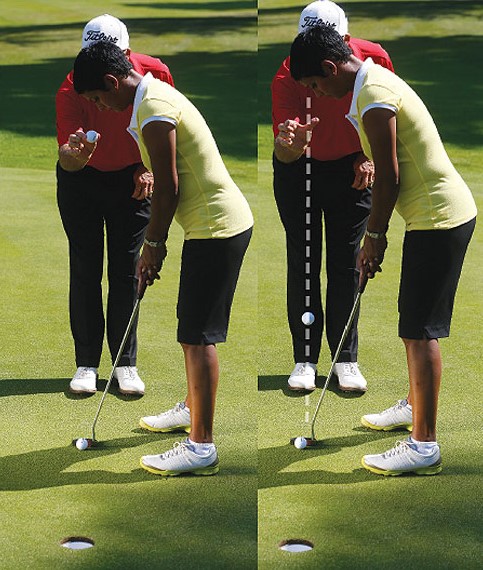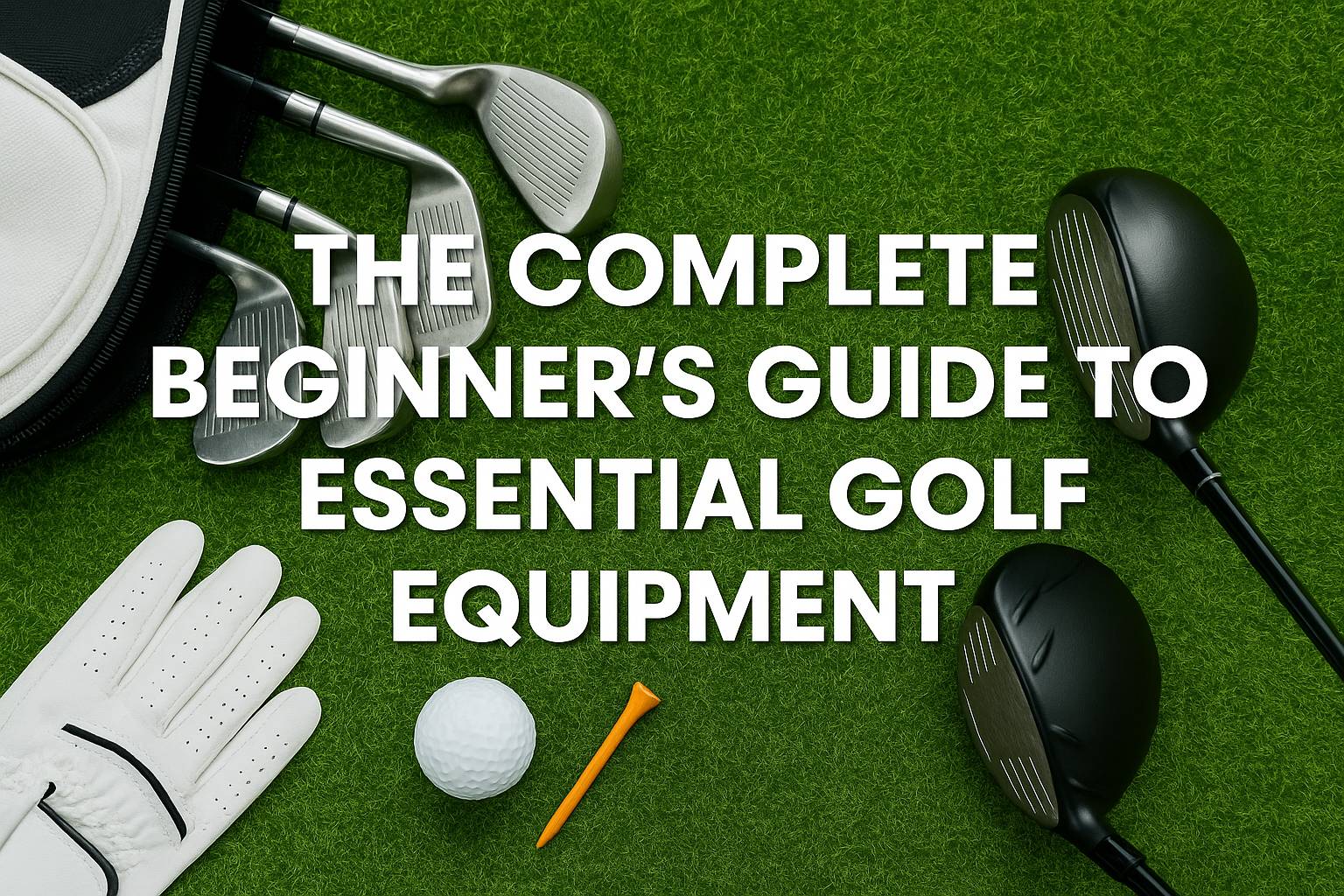Golf is a sport that demands precision, technique, and consistency. The main objective in golf is to move the ball from the starting point to the hole with as few strokes as possible. To achieve this, a player must not only master a good swing technique but also understand and implement the correct standing position, commonly referred to as the address position. This address position forms the foundation of the swing, significantly influencing swing path, ball direction, and shot power. Without a solid address, mistakes are more likely to occur—even with a well-prepared swing.
Below is a detailed breakdown from GoGolf highlighting the essential aspects of the standing position in golf. This guide is particularly beneficial for beginners aiming to build a solid address foundation and improve their overall game.

1. The Importance of Standing Close Enough to the Ball
One of the most common mistakes among beginners is standing too far from the ball. Many believe that greater distance provides more room for the club to swing, but in reality, it creates more issues. When standing too far, the arms tend to lock and become overly straight. This stiffness reduces swing flexibility and causes the club to move in a rounded path. As a result, when the club makes contact with the ball, the direction may veer off course or create an unintended spin.
Standing closer to the ball keeps the arms in a relaxed, slightly bent position, allowing for more natural club movement from backswing to follow-through. This is particularly helpful in short shots like chipping, where accuracy is paramount. However, being too close can also limit movement, increasing the risk of the club hitting the body or creating a restricted swing.
To find the optimal distance, practice hitting with varying stances. The ideal spacing is generally when the angle between the arms and chest forms around 30–35 degrees, measured from the grip to the clubhead in a straight line toward the body. Repetitive practice helps identify your comfort zone suited to your posture and club length.
2. Standing Tall with Slightly Open Feet for a Stable Base
The stance is the primary foundation of a golf shot. Ideally, your feet should be shoulder-width apart. A stance that’s too narrow reduces stability, while one that’s too wide can restrict body rotation. While comfort varies among players based on body type and flexibility, shoulder-width remains the standard, ensuring even weight distribution on both feet.
Standing tall doesn’t mean stiff. The body should remain relaxed—especially the shoulders and arms. Keep the shoulders parallel to the target and the chin slightly raised to allow for a full shoulder turn during the backswing. This posture facilitates easier rotation throughout the swing.
A strong, open stance also plays a crucial role during the downswing. As your weight shifts from the back foot to the front, your feet act as anchors, helping transfer energy efficiently. A weak stance leads to energy loss, decreasing shot power.
Moreover, correct foot placement helps control swing direction. With a stable base, it’s easier to maintain the club’s path in the correct swing plane. An unstable stance often disrupts hip rotation, resulting in slices or hooks.
3. Bending from the Hips, Not the Chest
Many beginners mistakenly lean forward by bending their chest toward the ball. The correct address position, however, involves bending from the hips—not the upper back. This technique is crucial to keep the spine straight, creating a natural angle relative to the ground, and maintaining balance.
To achieve this, start with your feet shoulder-width apart and slightly push your hips back while keeping your back straight. This motion allows the chest to tilt slightly toward the ball without the shoulders collapsing forward. Your weight should remain centered on the middle of your feet—not on the heels or toes.
A proper hip tilt allows for a smoother shoulder rotation, which is key to generating swing power. Incorrect bending limits shoulder mobility and weakens the swing. Additionally, maintaining a correct address posture helps prevent back injuries common among golfers who bend unnaturally.

4. Slight Knee Flex for a More Natural Posture
After establishing the hip bend, the next step is to slightly bend your knees. Knee flex isn’t just for aesthetic or visual purposes; it serves a vital functional role in maintaining balance. A slight bend allows for elastic weight distribution between both feet, supporting smoother energy transfer during backswing and downswing.
Beginners often overbend, resembling a squat position. This restricts hip movement, hindering natural body rotation. On the other hand, knees that are too straight make the body rigid and unstable at impact.
The ideal knee angle is around 15–20 degrees. In this position, your knees act like springs, helping generate upward momentum as you transition from backswing to downswing. This results in a smoother and more powerful swing.
5. Letting the Arms Hang Naturally to Maintain Balance
At address, your arms should hang naturally straight down from the shoulders. Avoid pulling them toward the body or extending them excessively. This natural drop ensures consistent arm length and promotes reliable swing distance and direction.
Typically, the hands gripping the club should align with or slightly inside the chin line. Your shoulders should be directly above the feet, creating an athletic, ready-to-rotate posture. This position helps synchronize hand motion with body rotation, avoiding forced movements that can cause slices or hooks.
Natural arm hang also helps maintain optimal spacing between the body and the club. Too close, and the swing becomes cramped and slow. Too far, and the swing arc becomes overly circular, complicating shot control.

6. Positioning the Clubhead Beside the Ball with a Square Face
The final step in the address is to place the clubhead beside the ball, ensuring the clubface is square and aligned with the target. For right-handed golfers, the grip should sit close to the left thigh. This promotes proper hand positioning where the hands lead the club through impact.
If the grip is parallel to or behind the ball, it weakens the hand’s ability to control impact. The wrists are more prone to collapse during contact, causing loss of power and accuracy. In contrast, the correct grip position ensures smooth energy transfer from body to club to ball, maximizing impact efficiency.
Conclusion: Integrating All Address Elements to Improve Consistency
In conclusion, the address position is far more than a routine step—it is the bedrock of every successful golf shot. A proper address simplifies backswing and downswing mechanics, optimizes energy direction, and enhances swing path consistency.
During practice, review each address element systematically. Ensure correct distance from the ball, adopt a shoulder-width stance, bend from the hips, maintain slight knee flex, allow arms to hang naturally, and position the clubhead beside the ball with the grip near the left thigh.
Consistently practicing a solid address position will significantly elevate your swing quality. Eventually, this setup becomes second nature, helping you deliver more precise, powerful, and error-free shots. A strong address is the essential first step toward more competitive and satisfying rounds of golf.
[ Follow our social media Account: GoGolf Instagram | GoGolf Facebook | GoGolf X ]











